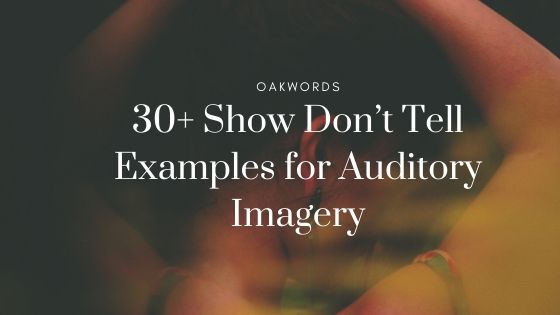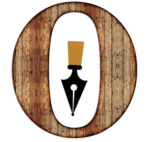
New writers often struggle to understand the difference between showing and telling
But, Most of the authors know these differences, and yet they fail to maintain the balance between showing and telling.
If you’re one of them, bookmark this article that has over 300+ Show Don’t Tell Examples. These sentences are completely at your disposal. You can use them in your writing as they are. (Just put us in attributions, it’ll make us happy).

Before I begin, understand that there are 7 different types of imagery in literature:
- Visual
- Auditory
- Olfactory
- Gustatory
- Tactile
- Kinesthetic
- Organic

In this article, I’ll talk in-depth about auditory imagery.
Auditory Imagery Literary Examples:
Anything you introduce in your story should have a sound, a voice so the reader is able to hear it/them, know what is their sound, their tone. Auditory imagery brings the sound of the objects, characters, and emotions in the story right out to the ears of the reader.
The background and setting of the story will play a great role in determining how a person/ character sounds. Whether they lisp or stammer, if there are a number of objects in a congested room, if the hall is big and empty enough for a voice to produce its echo. Auditory imagery takes care of all these. Take a look at the following examples:
- The clank of the keys
- The clang of the plates
- Crow of the rooster in the morning
- The chirping of the birds
- Whistling crescendo of the nightingale
- The rustle of the papers
- Pitter-patter of the rain
- The tapping of nails on the table
- Clap of hands
- Buzz of the bees
- The whistle of the wind
- Howling wind in the stormy evening
- Murmurs in the silence
- Whispers of the air
- Flapping of wings
- A drizzle of water on the tin can
- Gurgling baby
- Rattling breath
- Cracking of neck
- Cracking muscles
- Clogging drains
- Gulping down the throat
- Heavy breathing
- Clicking tongue
- Snapping of fingers
- Clearing throat
- Growling/ Roaring Groaning/ Moaning/ Grunting? Grumbling/ Muttering/ Stuttering/ Stammering/ Sighing/ Soughing/ Wailing/ Crying/ Sobbing/ Snivelling/ Whining/ Whimpering
- Deep/ Raspy/ Gravelly/ Croaky/ Singsong/ Smoky/ Throaty/ Guttural/ Strident/ Honeyed/ Plummy/ Husky/ Gruff/ Hoarse/ Flat/ Shrill/ Quiet/ Monotonous/ Toneless/ Tiny/ Thin/ Thick/ Nasal/ Breathy/ Soft/ Raucous
- The lapping of water in the river
- The popping of the cork
- Clattering of forks
- Din of the bell.

Pingback: 300+ Sensory Imagery Examples to Master Creative Writing | OakWords
Amazing!
I am a student of English literature at University of Dhaka in Bangladesh. I was struggling to understand the images. Suddenly, when browsing, I found these extraordinary materials and they cleared all my confusions. Now I take myself for a really happy person. Thank you so much.